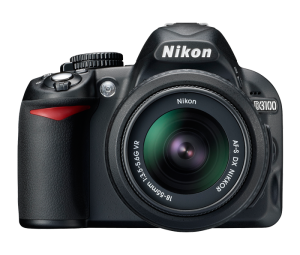So…the saga begins. Like almost everything else I do, I’ve decided to jump head first into photography, having no prior experience beyond the point-and-shoot cameras I’ve owned over the years. I’ve always wanted to take my board game reviews to the next level by taking nicer pictures, but I’ve also been dabbling with the idea of doing portraits & landscapes. Who would have thought that all-knowing logical me would have an artsy side?
I wanted to do a review of this camera, but seeing as how I know very little about photography in general, I’ve decided not to pretend to know what I was talking about. I will, however, jot down my thoughts for your viewing pleasure. My first impression of the camera was something along the lines of, “holy &%$#, look at all of those buttons!” After watching a video or two on YouTube, I’ve grown comfortable enough with the camera to actually use the thing. The manual is roughly seventy pages…so the next time you need to go to the john for the long haul, be sure to bring this with you.
So, what can it do? It can take pictures (I should hope so) as well as record video. It has four different ports for downloading your pictures or content to various media, like TVs and computers. You can choose to use the viewfinder (the little window where you stick your eye) or the fairly large LCD screen on the back of the camera when taking a picture. There’s a knob on the top of the camera that features different modes, which changes the camera settings appropriately to accommodate for the type of picture you’re taking. While there is an “auto mode” on that dial, there’s also a “guide mode”. The guide mode walks you through “simple” or “advanced” questions on the LCD screen and adjusts the camera settings accordingly. Obviously, this is what attracted me to the camera in the first place.
What have I learned so far? Well, let’s talk about zoom and lenses. There’s no “zoom” feature on the camera itself…all of that is done by twisting the lens on the camera. The lenses themselves are detachable and I quickly learned that different lenses allowed you to zoom various distances. My Nikon came with an 18-55 mm lens with VR and Auto/Manual toggles, which I later discovered wasn’t ideal for far-away pictures. It can do wide angles and close-ups decently enough, but it doesn’t zoom very far away. I’m looking into buying a 55-200 mm lens with VR and Auto/Manual toggles…hopefully this does the trick as they are fairly expensive (a couple hundred dollars). I also learned that VR stands for “Vibration Reduction” and minimizes the blur caused by camera shake and other movements.
I have a lot of learning to do. I still don’t know what the different shutter speeds and ISO values mean, but I have a feeling that I’ll be able to learn them on this particular camera. It’s incredibly easy to use and I honestly can’t wait to try out the manual settings to see how the “auto modes” compare in terms of picture quality. I’m liking the camera so far and time permitting, I’ll write a full review. I would have uploaded a picture or two, but I discovered that the USB cord I have for my point-and-shoot does not work with this camera…meaning I’ll have to wait until next week to actually unload my camera’s content. The camera doesn’t come with an SD card either, which is required to make the camera work…luckily, the 8 gig SD card I had in my point-and-shoot worked fine.
If you are looking for more reviews on cameras and various lenses, then click on Cultured Kiwi and visit their website for more.
For those of you that are friends with me on Facebook, I’ll go ahead and apologize in advance for the onslaught of pictures that I’ll be uploading in the next couple of weeks. Perhaps it’s time to look into Pinterest? At any rate, if you experienced folk out there have any tips for a first-time SLR user, feel free to leave a comment or five.
—
You can check out the tech specs for yourself here:
—


So exciting!!! You’ve moved into the big boy cameras. I’ll be happy to answer any of your questions. I know a thing or two 🙂
A thing or two? Pffft! You wrote the freakin’ book, Miss Heather! 🙂 I could use all the help I can get.
Well I’d love to share my knowledge. First of all, ISO came about to assign different speeds to film but it has remained through the digital age. Higher ISO doesn’t require as much light so generally indoors means higher ISO and outdoors means lower ISO. The catch is that higher ISO can start to make the image look grainy… photography is all about balancing out your light. Call me, vent, or whatever and we can talk photography. I don’t get to do that much anymore these days.
I appreciate that, the manual doesn’t really explain ISO in detail. I’m just glad this thing has an “idiot button”, though I’ll be switching off of it soon enough.